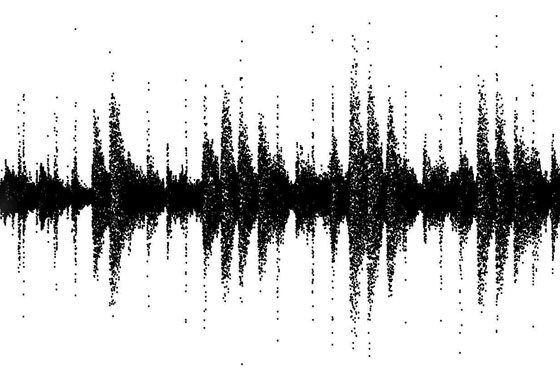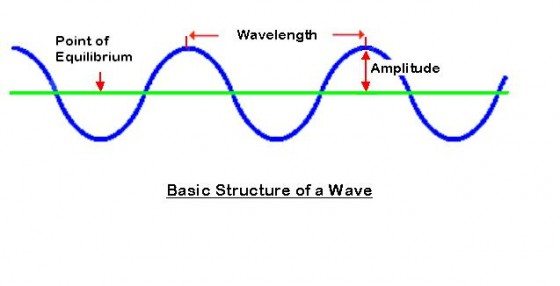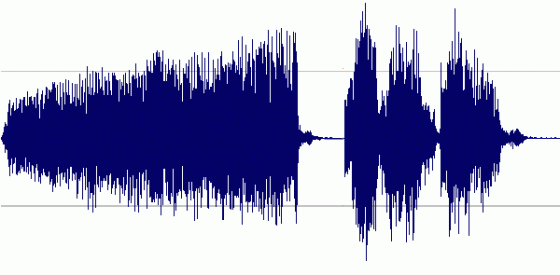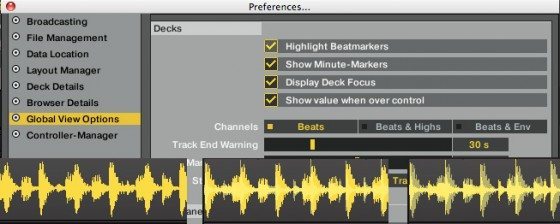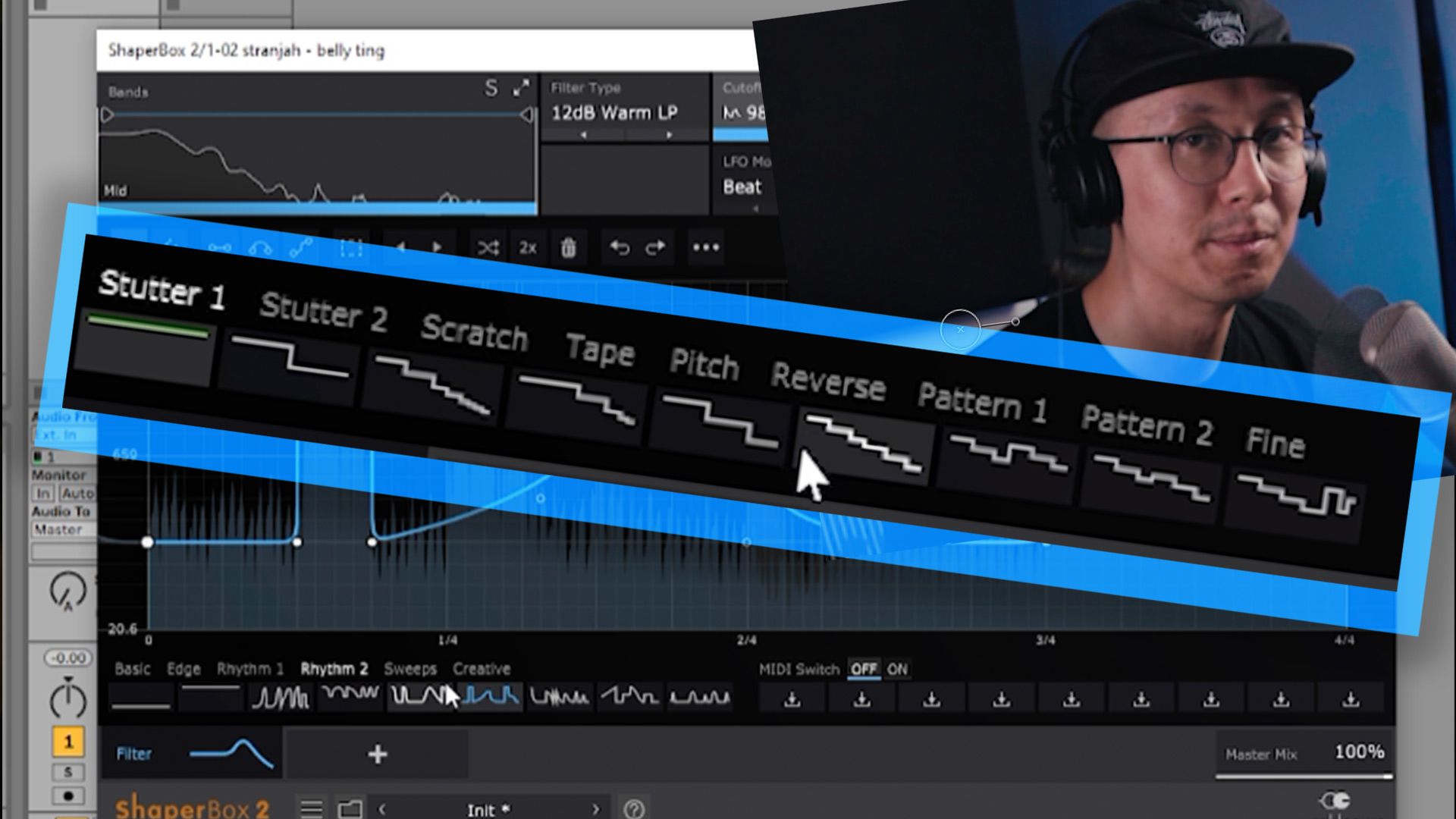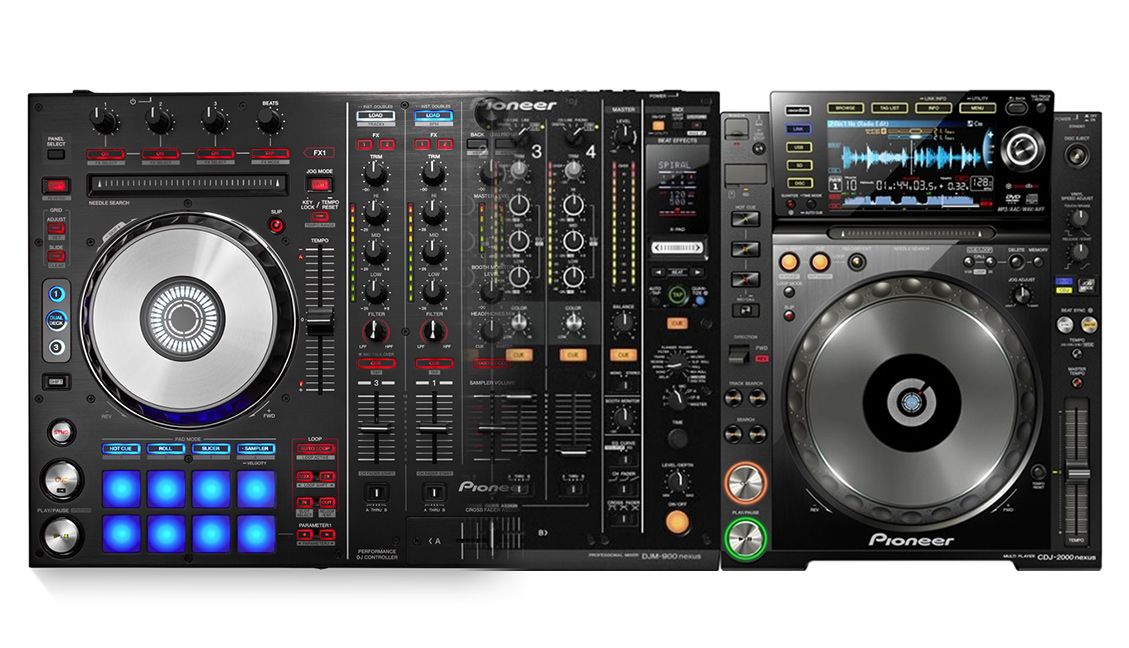Digital djing provides a wide set of tools that make your job better but one of the clearest benefits is the ability to see each songs waveform. A waveform is the play by play visual representation of the sonic action in a track. By watching wave forms you get an effective idea of what is currently happening and what is coming up so smart mix decisions can easily be made on the fly. In this article we will demonstrate the basics of the waveforms and show how 2 of the top dj systems Traktor and Serato enhance that information to make your job even easier.
Its really quite amazing that music, something we are so effected by, is really such a simple thing. The wave form you see above is expressing 2 fundamental things about one single sine wave, one of the most basic forms of sound.
1. Amplitude: How loud the signal is
2. Wavelength: What frequency it is. The wider or longer the the wave length, the lower the frequency.
A song is made up of many, many of these simple waves combined into one sonic image:
Its hard to separate the sounds visually from this view alone but with a little eye training you can begin to pick out some important trends and recognize various parts of the songs.
notice that in this first wave form the space between beats is sparse, this suggests minimal instrumentation and a good place to mix.

in this section a synth stab is added and the wave starts to get more busy

now that a vocal is added, the frequency spectrum really starts to fill up.

and here in the break down there is a complete absence of loud transients (beats)

A HELPING HAND
How a program visualizes the wave forms is entirely up to them so several dj programs enhance the wave form views to make it easier for us to recognize these various parts. You can also customize the wave view to suit your personal tastes. In Traktor you can choose how much of the wave form information is displayed to make the beats more defined and filter out non-rhythmic visuals.
in this image we are showing the same section using beats, beats & highs and beats + envelopes
In Serato, they have colorized the wave forms to distinguish parts of the beat structure.
Red = BassBlue=TrebGreen=Mid
You can alter the wave form view in Serato as well but its less obvious. To zoom in on the wav, simply click the deck and use + and -.
Another slightly hidden trick; by holding the control button and clicking on a deck you can remove the color coding of the wave form, and split the view into 3 channels separate waves (hi, mid, lo) for an even more accurate picture into the mix.


